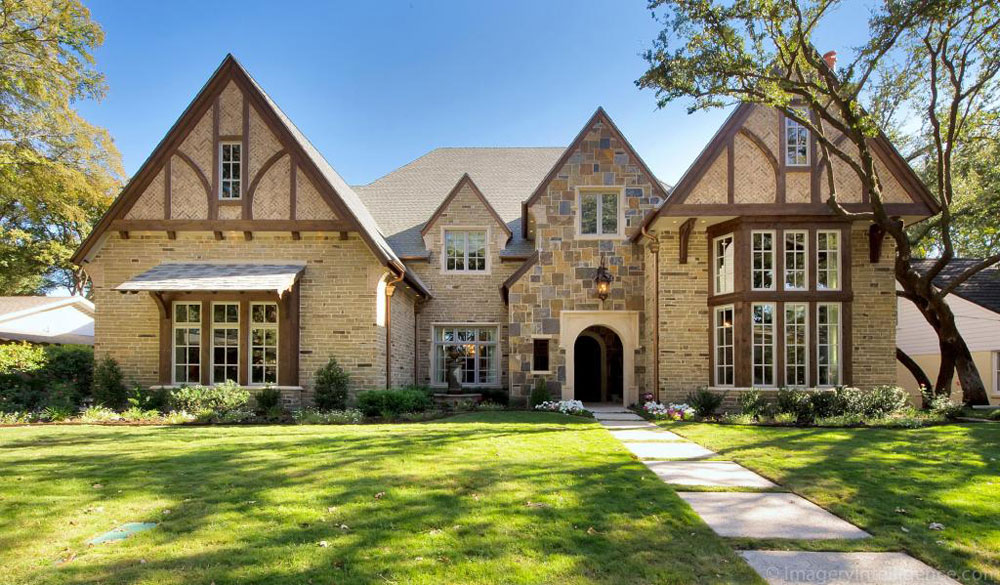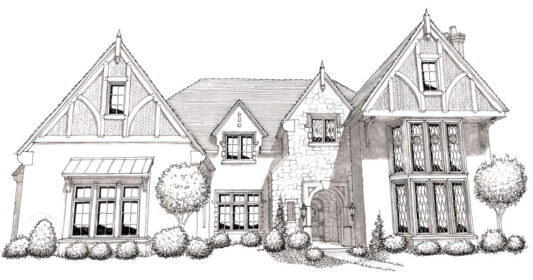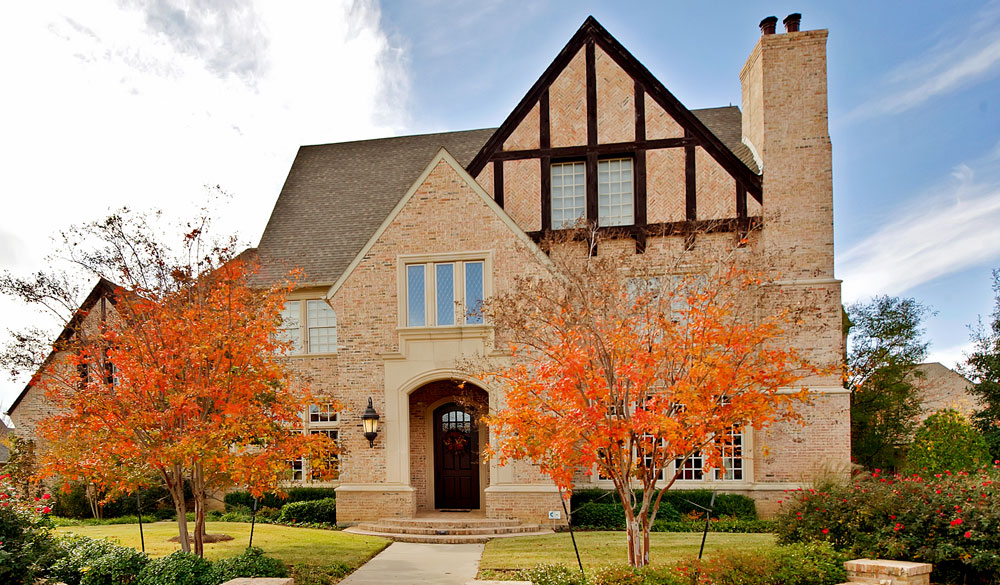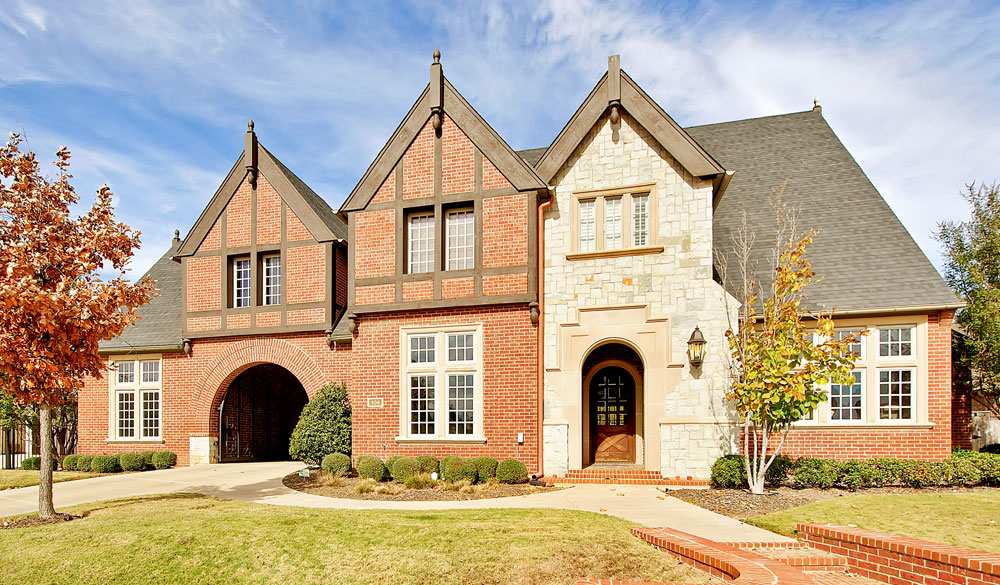

TUDOR REVIVAL
This style is based on a romantic re-envisioning of historical England, blending Medieval buildings with Renaissance details. The earlier examples in America date back to the early 1890s, and became extremely popular following WWI. Many varieties were produced during this period as the style spread across the country, and it was common for it’s characteristics to vary geographically. The term “Tudor,” however, is somewhat inaccurate as the style draws much more heavily on architecture produced during the Elizabethan and Jacobean eras of England’s history, and not the Tudor period (as the name implies). The style fell out of favor post WWII, but has seen a resurgence in popularity since the 1970s.
CHARACTERISTICS
While front facing gables were far and few between in England, this became a major consistent identifying feature for the Tudor Revival style seen across the United States. Identifying features include:
- Steeply pitched roofs,
- Tall, narrow, multi-pane widows (predominately rectilinear as opposed to arched) grouped together.
- Large and elaborate chimneys, often with multiple flues and decorative chimney post made from clay, metal or carved stone.
The entryway and front doors are often arched (either half round or with the 4-point “Tudor” arch). Lastly, while many people associate the exposed wood frame called “half timbering” with Tudor Revival architecture, in reality this detail is also shared with other styles (such as French Eclectic), and is also only seen (historically) on about 1/3 of Tudor Revival homes in America.
Contact Us





